Power sector awards momentum accelerates
26 December 2024

The Middle East and North Africa (Mena) region’s power sector awarded over $60bn of contracts between January and early November 2024, up 47.5% compared to the value of awarded contracts in the previous full year.
This figure is more than double the average value of annual contract awards recorded between 2014 and 2023, based on data from regional projects tracker MEED Projects.
 It also exceeds by 21% the total combined value of contracts awarded between 2018 and 2020, when some regional governments and utilities began pivoting to renewable energy and freezing the expansion of thermal plant capacities, in line with goals aimed at decarbonising their electricity systems.
It also exceeds by 21% the total combined value of contracts awarded between 2018 and 2020, when some regional governments and utilities began pivoting to renewable energy and freezing the expansion of thermal plant capacities, in line with goals aimed at decarbonising their electricity systems.
In 2020, the Covid-19 pandemic slowed down project activity and temporarily delayed the awarding of some contracts.
The market staged a short-lived comeback in 2021, when Saudi Arabia awarded a string of contracts for solar photovoltaic (PV) independent power projects (IPPs), including a contract to develop the 600MW Shoaiba solar PV scheme, which holds the world record for the lowest unsubsidised solar PV production at $cents1.04 a kilowatt-hour.
A slight contraction occurred the following year due to a spike in raw materials and engineering, procurement and construction (EPC) costs.
Last year saw a stunning recovery, however, helped by the award of new renewable energy projects in Saudi Arabia, the UAE, Egypt and Oman, as well as by a resumption of contract awards for new gas-fired power plants, particularly in Saudi Arabia, Libya and Iraq.
Yet 2024 is set to outshine 2023 in terms of awarded contracts for thermal, renewable energy and nuclear power generation plants, as well as for power transmission and distribution (T&D) infrastructure such as substations and overhead transmission lines.
Major 2024 awards
In 2023, power generation projects accounted for an estimated 79% of total contract awards, with T&D projects accounting for the rest.
A different picture is emerging in 2024, with data in the first nine months of the year suggesting that generation contract awards are retreating to about 64% of the total. This is due to increased T&D capital spending that has so far driven a 150% increase in award value compared to full-year 2023.
This is a clear indicator of T&D capacity buildout catching up with the generation capacity expansion, especially as larger economies such as Saudi Arabia strive to set up stronger and more efficient electricity links domestically, and as the energy-rich GCC states seek to establish stronger electricity links with one another and with their neighbours, including Egypt, Iraq and Jordan.
Saudi Arabia has dominated the overall Mena power contracts landscape. Its share of 29% in 2022 soared to 61% in 2023 and 67% in the first 10-11 months of 2024.
In May, principal buyer Saudi Power Procurement Company (SPPC) signed two power-purchase agreements with Japan’s Marubeni Corporation for contracts to develop two wind IPPs under the fourth round of the National Renewable Energy Programme (NREP). The Al-Ghat and Waad Al-Shamal wind IPPs have a total combined capacity of 1,100MW.
The contract for a third wind IPP, tendered as part of round four of the NREP, is also expected to be awarded soon.
In June, Saudi sovereign wealth vehicle the Public Investment Fund (PIF) let the fourth batch of solar PV schemes, which it is implementing bilaterally through the Price Discovery Scheme.
A team comprising Acwa Power, PIF-backed Water & Electricity Holding Company (Badeel) and Saudi Aramco Power Company (Sapco), a subsidiary of the state majority-owned oil giant Saudi Aramco, will develop the three solar projects, which will have a total combined capacity of 5,500MW and will require an investment of about $3.3bn.
The Haden solar PV and Muwayh solar power plants, which will each have a capacity of 2,000MW, will be located in Saudi Arabia’s Mecca region. The third project, the 1,500MW Al-Khushaybi solar PV plant, will be located in the Qassim region. The three new solar PV facilities are expected to become operational in the first half of 2027.
In early November, SPPC also announced the winning bidders for the contracts to develop four combined-cycle gas turbine plants comprising the second batch of thermal capacity that it has tendered since 2023. The four plants, located in Riyadh and the Eastern Province, will each have a capacity of 1,800MW and will require an investment of about $2bn each.
A developer consortium comprising the UAE-based Abu Dhabi National Energy Company (Taqa), Japan’s Jera Company and the local Albawani Company successfully bid for the contracts to develop and operate the Rumah 2 and Nairiyah 2 IPPs. Meanwhile, Saudi Electricity Company (SEC), Riyadh-based utility developer Acwa Power and South Korea’s Korea Electric Power Corporation (Kepco) won the contracts to develop and operate the similarly configured Rumah 1 and Nairiyah 1 IPPs.
State utility SEC is also understood to have issued the limited notices to proceed for six greenfield thermal power plants with a total combined capacity of over 16,000MW.
Power generation projects for which final contracts are expected to be awarded before the end of 2024 include:
- Hajr: 3,600MW
- Marjan: 1,800MW
- Riyadh PP12: 1,800MW
- Qurayyah: 3,600MW
- Ghazlan 1: 2,400MW
- Ghazlan 2: 2,900MW
The $5.3bn high-voltage direct current network project connecting the central, western and southern regions of Saudi Arabia was the single largest power contract awarded in Saudi Arabia in 2024.
The UAE, meanwhile, has awarded three key power contracts this year, including for the Al-Ajban solar IPP, which was won by a team of France’s EDF and South Korea’s Korea Western Power Company (Kowepo), and for the Dhafra waste-to-energy project, which a team of Japan’s Marubeni Corporation, Japan Overseas Infrastructure Investment Corporation and Zurich-headquartered Hitachi Zosen Inova is developing.
Dubai Electricity & Water Authority (Dewa) is also understood to have awarded the contract to complete the Jebel Ali K-Station to Egypt-based Power Generation Engineering & Services Company.
 2025 outlook
2025 outlook
The Mena power projects pipeline remains robust, with over $45bn-worth of contracts under bid evaluation and another $50bn in the prequalification stage as of late 2024, according to MEED Projects.
Saudi Arabia is likely to remain dominant, particularly if SPPC and the PIF activate a plan by the Energy Ministry to procure 20,000MW of renewable energy capacity annually until it reaches its target for renewables to account for half of its energy production mix by 2030.
Morocco has the second-largest power projects pipeline thanks to several planned schemes to export clean energy and green hydrogen to Europe. Notably, the tender is under way for the country’s first two solar PV plus battery energy storage system (bess) projects, Noor Midelt 2 and 3.
Abu Dhabi also maintains a substantial renewables and gas-fired generation project pipeline. It has several upcoming IPPs with a total combined capacity of over 7,000MW, of which more than 6,000MW is in the tendering stage.
While the procurement process for Saudi Arabia’s first nuclear power plant in Duwaiheen has been delayed, the UAE has plans to procure the next phase of its nuclear power plant project in Barakah.
Green industrial development in steel and aluminium, as is being undertaken in the UAE, is a driver for ongoing clean energy capacity buildout, notes Karen Young, senior research scholar at Columbia University’s Centre on Global Energy Policy.
Egypt, Iran, Kuwait and Iraq have the next largest power projects pipelines. The key drivers in each state vary, with populous countries Egypt and Iran seeking to develop integrated green hydrogen hubs and nuclear power capacity, respectively, while Kuwait remains a promising market with extended plans to procure both conventional and renewable energy capacity to address peak demand.
There are indications that Iraq’s first utility-scale solar PV scheme – a 1GW project being developed by France’s TotalEnergies – will head into the construction stage in the coming months, along with other similar projects for which preliminary agreements were signed by Iraqi authorities in 2021-22.
Oman is actively pursuing renewable energy capacity, with the state offtaker having tendered the contracts for two wind IPPs in September 2024.
In Oman and Qatar, the main downstream companies, Petroleum Development Oman and QatarEnergy, are developing renewable energy capacity as a means of mitigating their greenhouse gas emissions, as well as to support their respective government’s net-zero targets.
In November, Bahrain started the procurement process for its fourth independent water and power project (IWPP) in Sitra, which replaced the previously planned Al-Dur IWPP 3 scheme.

Other trends
SEC affiliate National Grid Saudi Arabia has awarded EPC contracts for several bess packages to local firm Algihaz this year. In August, it tendered a contract for the construction of a further 2,500MW of energy storage capacity.
In parallel, the procurement process is under way for the first independent bess packages in Saudi Arabia and Abu Dhabi, with other utilities expected to follow suit in procuring bess using an IPP model. Bess will boost grid flexibility and spinning reserves in the face of increased renewable energy capacity and demand.
In addition to bess and several gigawatts of solar and wind capacity, Saudi Arabia gigaproject developer Neom, which plans to be powered 100% by renewable energy by the end of the decade, is also considering a network of large-scale pumped hydropower storage plants.
However, despite the ongoing capacity buildout across the Mena states, some end-users – particularly in fossil fuel-
scarce jurisdictions such as Morocco – continue to struggle with supply.
“I’ve been part of a research project in Morocco looking at the renewable power landscape and green economy more broadly. In that case, we do see massive buildout, but it is tailored for offtake to state-related industrials,” says Columbia University’s Young.
She adds that a telephone survey of 1,000 small and medium-sized businesses in Morocco about their perception of the accessibility and affordability of renewable energy yielded surprising results.
“They strongly suggested a lack of support, given that smaller enterprises continue to see power outages and this has in many cases caused damage to their equipment and abilities to stay open and service customers.
“The disconnect between power buildout and industrial advances in a green supply chain and how small and medium firms see power accessibility and reliability is very stark. In a Mena-wide sense, we might start to question how the delivery and transmission of power in an equitable way affects economic growth opportunities overall.”
Exclusive from Meed
-
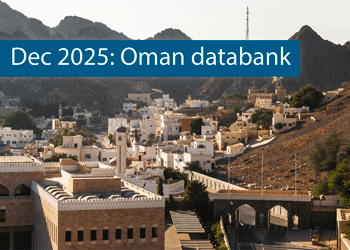 Oman’s growth forecast points upwards
Oman’s growth forecast points upwards24 December 2025
-
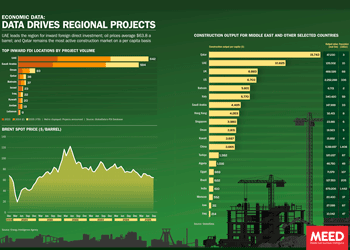 December 2025: Data drives regional projects
December 2025: Data drives regional projects23 December 2025
-
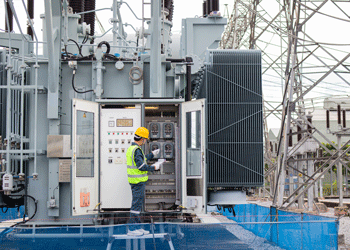 Local firm bids lowest for Kuwait substation deal
Local firm bids lowest for Kuwait substation deal22 December 2025
-
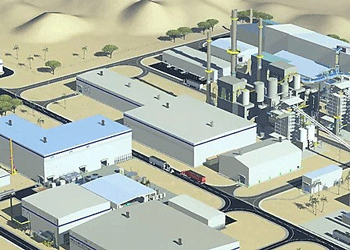 Saudi-Dutch JV awards ‘supercentre’ metals reclamation project
Saudi-Dutch JV awards ‘supercentre’ metals reclamation project22 December 2025
-
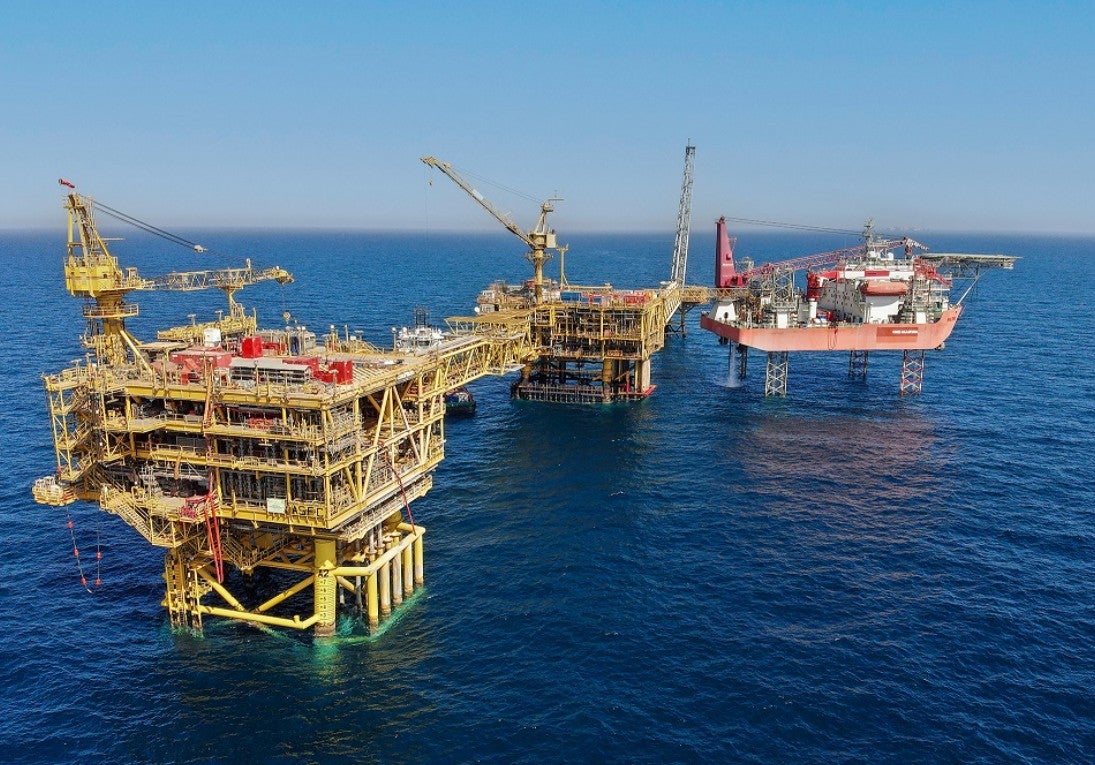 QatarEnergy LNG awards $4bn gas project package
QatarEnergy LNG awards $4bn gas project package22 December 2025
All of this is only 1% of what MEED.com has to offer
Subscribe now and unlock all the 153,671 articles on MEED.com
- All the latest news, data, and market intelligence across MENA at your fingerprints
- First-hand updates and inside information on projects, clients and competitors that matter to you
- 20 years' archive of information, data, and news for you to access at your convenience
- Strategize to succeed and minimise risks with timely analysis of current and future market trends

Related Articles
-
 Oman’s growth forecast points upwards
Oman’s growth forecast points upwards24 December 2025

MEED’s January 2026 report on Oman includes:
> COMMENT: Oman steadies growth with strategic restraint
> GVT & ECONOMY: Oman pursues diversification amid regional concerns
> BANKING: Oman banks feel impact of stronger economy
> OIL & GAS: LNG goals galvanise Oman’s oil and gas sector
> POWER & WATER: Oman prepares for a wave of IPP awards
> CONSTRUCTION: Momentum builds in construction sectorTo see previous issues of MEED Business Review, please click herehttps://image.digitalinsightresearch.in/uploads/NewsArticle/15306449/main.gif -
 December 2025: Data drives regional projects
December 2025: Data drives regional projects23 December 2025
Click here to download the PDF
Includes: Top inward FDI locations by project volume | Brent spot price | Construction output
MEED’s January 2026 report on Oman includes:
> COMMENT: Oman steadies growth with strategic restraint
> ECONOMY: Oman pursues diversification amid regional concerns
> BANKING: Oman banks feel impact of stronger economy
> OIL & GAS: LNG goals galvanise Oman’s oil and gas sector
> POWER & WATER: Oman prepares for a wave of IPP awards
> CONSTRUCTION: Momentum builds in construction sectorTo see previous issues of MEED Business Review, please click herehttps://image.digitalinsightresearch.in/uploads/NewsArticle/15306140/main.gif -
 Local firm bids lowest for Kuwait substation deal
Local firm bids lowest for Kuwait substation deal22 December 2025
The local Al-Ahleia Switchgear Company has submitted the lowest price of KD33.9m ($110.3m) for a contract to build a 400/132/11 kV substation at the South Surra township for Kuwait’s Public Authority for Housing Welfare (PAHW).
The bid was marginally lower than the two other offers of KD35.1m and KD35.5m submitted respectively by Saudi Arabia’s National Contracting Company (NCC) and India’s Larsen & Toubro.
PAHW is expected to take about three months to evaluate the prices before selecting the successful contractor.
The project is one of several transmission and distribution projects either out to bid or recently awarded by Kuwait’s main affordable housing client.
This year alone, it has awarded two contracts worth more than $100m for cable works at its 1Z, 2Z, 3Z and 4Z 400kV substations at Al-Istiqlal City, and two deals totalling just under $280m for the construction of seven 132/11kV substations in the same township.
Most recently, it has tendered two contracts to build seven 132/11kV main substations at its affordable housing project, west of Kuwait City. The bid deadline for the two deals covering the MS-01 through to MS-08 substations is 8 January.
https://image.digitalinsightresearch.in/uploads/NewsArticle/15305745/main.gif -
 Saudi-Dutch JV awards ‘supercentre’ metals reclamation project
Saudi-Dutch JV awards ‘supercentre’ metals reclamation project22 December 2025
The local Advanced Circular Materials Company (ACMC), a joint venture of the Netherlands-based Shell & AMG Recycling BV (SARBV) and local firm United Company for Industry (UCI), has awarded the engineering, procurement and construction (EPC) contract for the first phase of its $500m-plus metals reclamation complex in Jubail.
The contract, estimated to be worth in excess of $200m, was won by China TianChen Engineering Corporation (TCC), a subsidiary of China National Chemical Engineering Company (CNCEC), following the issue of the tender in July 2024.
Under the terms of the deal, TCC will process gasification ash generated at Saudi Aramco’s Jizan refining complex on the Red Sea coast to produce battery-grade vanadium oxide and vanadium electrolyte for vanadium redox flow batteries. AMG will provide the licensed technology required for the production process.
The works are the first of four planned phases at the catalyst and gasification ash recycling ‘Supercentre’, which is located at the PlasChem Park in Jubail Industrial City 2 alongside the Sadara integrated refining and petrochemical complex.
Phase 2 will expand the facility to process spent catalysts from heavy oil upgrading facilities to produce ferrovanadium for the steel industry and/or additional battery-grade vanadium oxide.
Phase 3 involves installing a manufacturing facility for residue-upgrading catalysts.
In the fourth phase, a vanadium electrolyte production plant will be developed.
The developers expect a total reduction of 3.6 million metric tonnes of carbon dioxide emissions a year when the four phases of the project are commissioned.
SARBV first announced its intention to build a metal reclamation and catalyst manufacturing facility in Saudi Arabia in November 2019. The kingdom’s Ministry of Investment, then known as the Saudi Arabian General Investment Authority (Sagia), supported the project.
In July 2022, SARBV and UCI signed the agreement to formalise their joint venture and build the proposed facility.
The project has received support from Saudi Aramco’s Namaat industrial investment programme. Aramco, at the time, also signed an agreement with the joint venture to offtake vanadium-bearing gasification ash from its Jizan refining complex.
Photo credit: SARBV
https://image.digitalinsightresearch.in/uploads/NewsArticle/15305326/main.gif -
 QatarEnergy LNG awards $4bn gas project package
QatarEnergy LNG awards $4bn gas project package22 December 2025
QatarEnergy LNG, a subsidiary of state-owned QatarEnergy, has awarded the main engineering, procurement, construction and installation (EPCI) contract for a major package for the second phase of its North Field Production Sustainability (NFPS) project.A consortium comprising the Italian contractor Saipem and state-owned China Offshore Oil Engineering Company (COOEC) has secured the EPCI contract for the COMP5 package. The contract value is $4bn, with Saipem declaring its share to be worth $3.1bn.
Milan-headquartered Saipem said the contract will run for about five years. The scope of work comprises engineering, procurement, fabrication and installation of two compression complexes, each including a compression platform, a living quarters platform, a flare platform supporting the gas combustion system, and the related interconnecting bridges. Each complex will have a total weight of about 68,000 tonnes.
Offshore installation operations will be carried out by Saipem’s De He construction vessel in 2029 and 2030.
MEED previously reported that the following contractors submitted bids for the NFPS phase two COMP5 package:
- Larsen & Toubro Energy Hydrocarbon (India)
- McDermott (US)
- Saipem/China Offshore Oil Engineering Company (Italy/China)
QatarEnergy LNG, formerly Qatargas, is said to have issued the tender for the NFPS phase two COMP5 package in the first quarter of the year.
Contractors submitted technical bids for the COMP5 package in late June, while commercial bids were submitted by 8 October, as per sources.
Based upon initial evaluation of bids by QatarEnergy LNG, L&TEH has emerged as the lowest bidder for the COMP5 package, followed by McDermott, with the consortium of Saipem and COOEC in third place, MEED reported in late October.
In the weeks following that, the project operator is said to have engaged all bidders for a final round of negotiations, during which the consortium of Saipem and COOEC is believed to have “clinched the deal”, according to sources.
The detailed scope of work on the COMP5 package covers the EPCI work on the following:
- Two gas compression platforms, each weighing 30,000-35,000 tonnes, plus jacket
- Two living quarters platforms, plus jacket
- Two gas flare platforms, plus jacket
- Brownfield modification work at two complexes
NFPS scheme
QatarEnergy’s North Field liquefied natural gas (LNG) expansion programme requires the state enterprise to pump large volumes of gas from the North Field offshore reserve to feed the three phases of the estimated $40bn-plus programme.
QatarEnergy has already invested billions of dollars in engineering, procurement and construction works on the two phases of the NFPS project, which aims to maintain steady gas feedstock for the North Field LNG expansion phases.
The second NFPS phase will mainly involve building gas compression facilities to sustain and gradually increase gas production from Qatar’s offshore North Field gas reserve over the long term.
Saipem has been the most successful contractor on the second NFPS phase, securing work worth a total of $8.5bn.
QatarEnergy LNG awarded Saipem a $4.5bn order in October 2022 to build and install gas compression facilities. The main scope of work on the package, which is known as EPCI 2, covers two large gas compression complexes that will comprise decks, jackets, topsides, interconnecting bridges, flare platforms, living quarters and interface modules.
The gas compression complexes – CP65 and CP75 – will weigh 62,000 tonnes and 63,000 tonnes, respectively, and will be the largest fixed steel jacket compression platforms ever built.
Following that, Saipem won combined packages COMP3A and COMP3B of the NFPS project’s second phase in September last year.
The scope of work on the combined packages encompasses the EPCI of a total of six platforms, approximately 100 kilometres (km) of corrosion resistance alloy rigid subsea pipelines of 28-inches and 24-inches diameter, 100km of subsea composite cables, 150km of fibre optic cables and several other subsea units.
Separately, QatarEnergy LNG awarded McDermott the contract for the NFPS second phase package known as EPCI 1, or COMP1, in July 2023. The scope of work on the estimated $1bn-plus contract is to install a subsea gas pipeline network at the North Field gas development.
In March this year, India’s Larsen & Toubro Energy Hydrocarbon (LTEH) won the main contract for the combined 4A and 4B package, which is the fourth package of the second phase of the NFPS project and is estimated to be valued at $4bn-$5bn.
The main scope of work on the package is the EPCI of two large gas compression systems that will be known as CP8S and CP4N, each weighing 25,000-35,000 tonnes. The contract scope also includes compression platforms, flare gas platforms and other associated structures.
LTHE sub-contracted detailed engineering and design works on the combined 4A and 4B package to French contractor Technip Energies.
NFPS first phase
Saipem is also executing the EPCI works on the entire first phase of the NFPS project, which consists of two main packages.
Through the first phase of the NFPS scheme, QatarEnergy LNG aims to increase the early gas field production capacity of the North Field offshore development to 110 million tonnes a year.
QatarEnergy LNG awarded Saipem the contract for the EPCI package in February 2021. The package is the larger of the two NFPS phase one packages and has a value of $1.7bn.
Saipem’s scope of work on the EPCI package encompasses building several offshore facilities for extracting and transporting natural gas, including platforms, supporting and connecting structures, subsea cables and anti-corrosion internally clad pipelines.
The scope of work also includes decommissioning a pipeline and other significant modifications to existing offshore facilities.
In addition, in April 2021, QatarEnergy LNG awarded Saipem two options for additional work within the EPCI package, worth about $350m.
QatarEnergy LNG awarded Saipem the second package of the NFPS phase one project, estimated to be worth $1bn, in March 2021.
Saipem’s scope of work on the package, which is known as EPCL, mainly covers installing three offshore export trunklines running almost 300km from their respective offshore platforms to the QatarEnergy LNG north and south plants located in Ras Laffan Industrial City.
Saipem performed the front-end engineering and design work on the main production package of the first phase of the NFPS as part of a $20m contract that it was awarded in January 2019. This provided a competitive advantage to the Italian contractor in its bid to win the package.
https://image.digitalinsightresearch.in/uploads/NewsArticle/15305330/main2239.jpg

